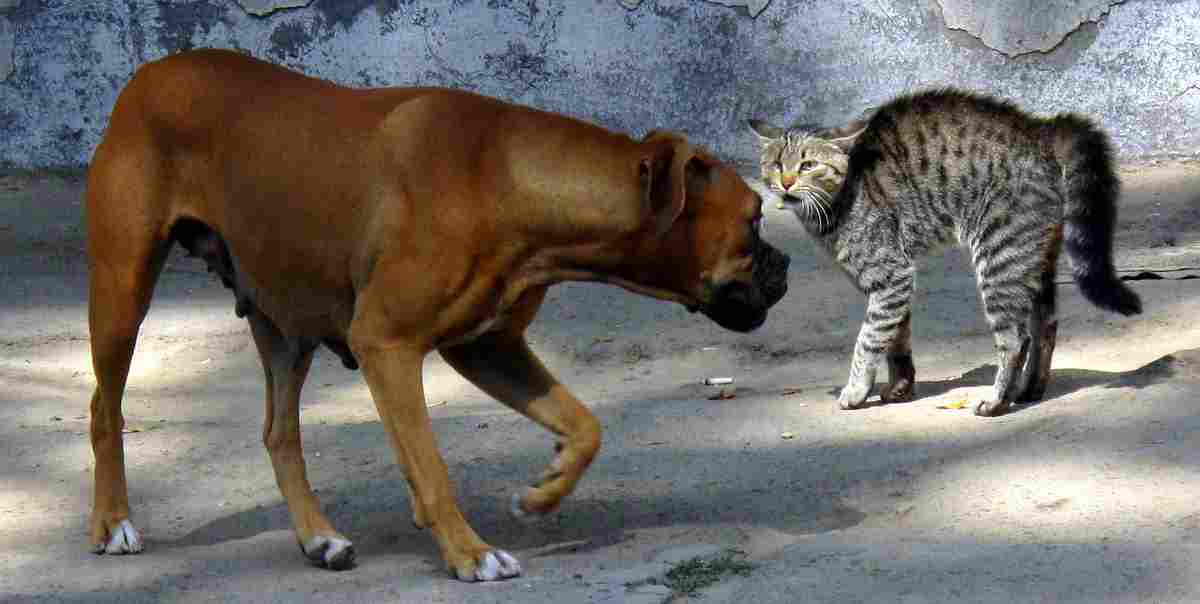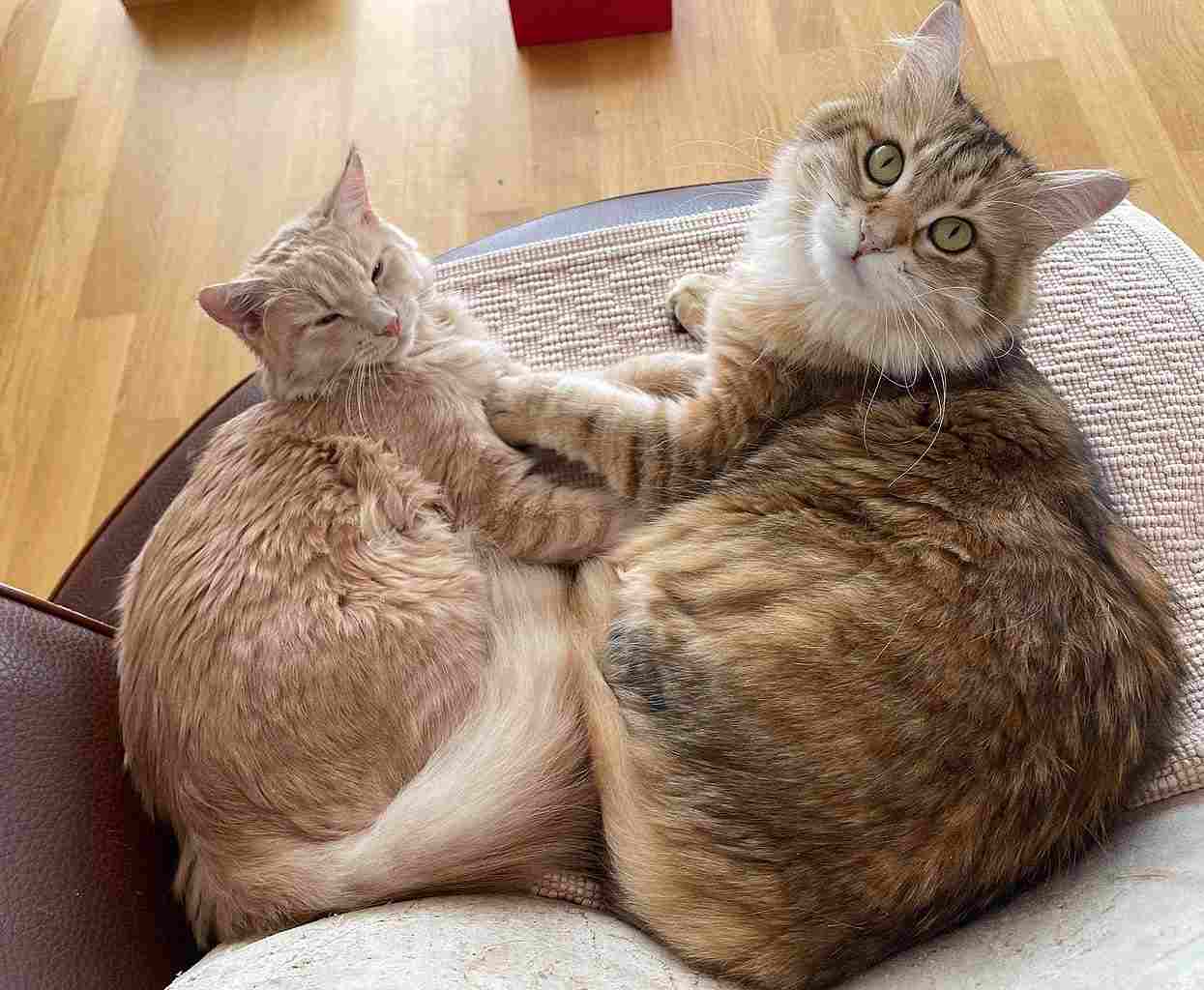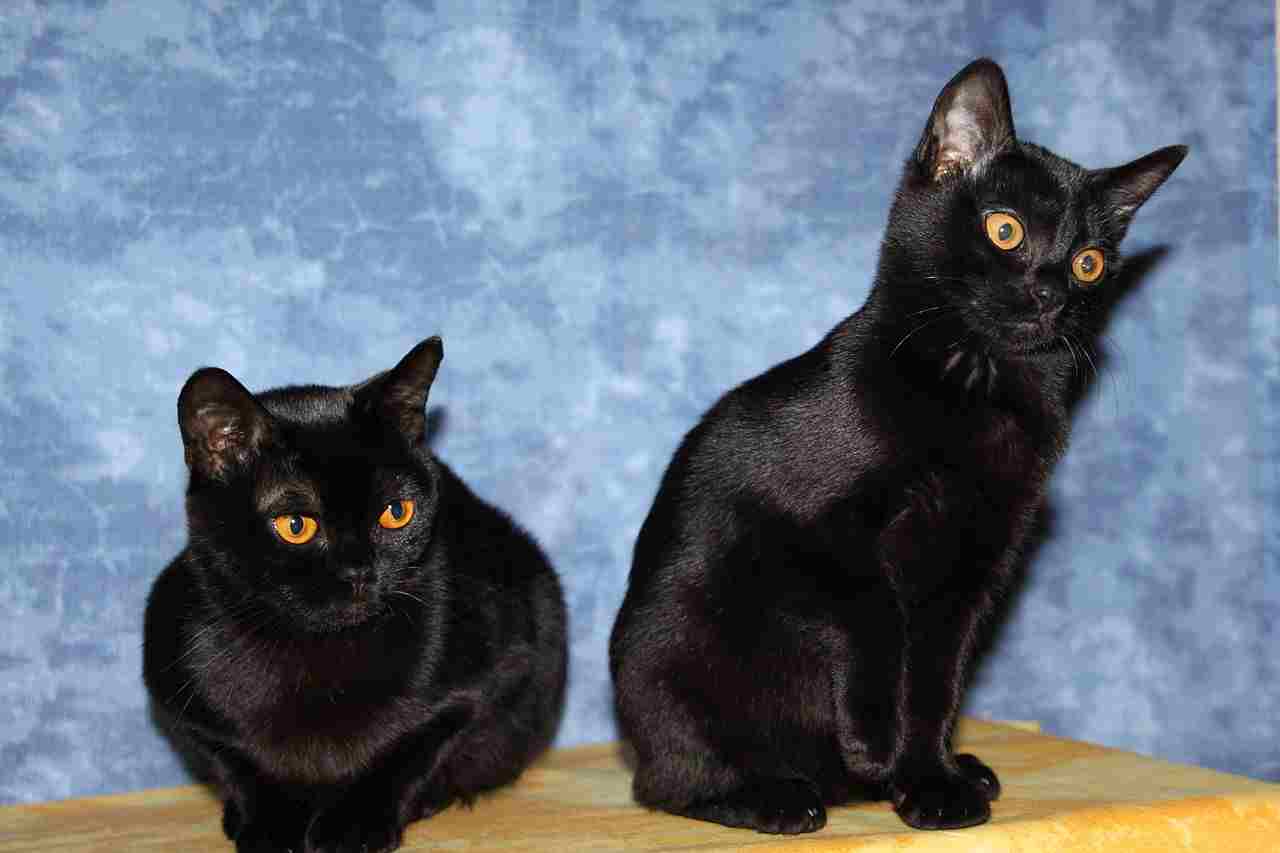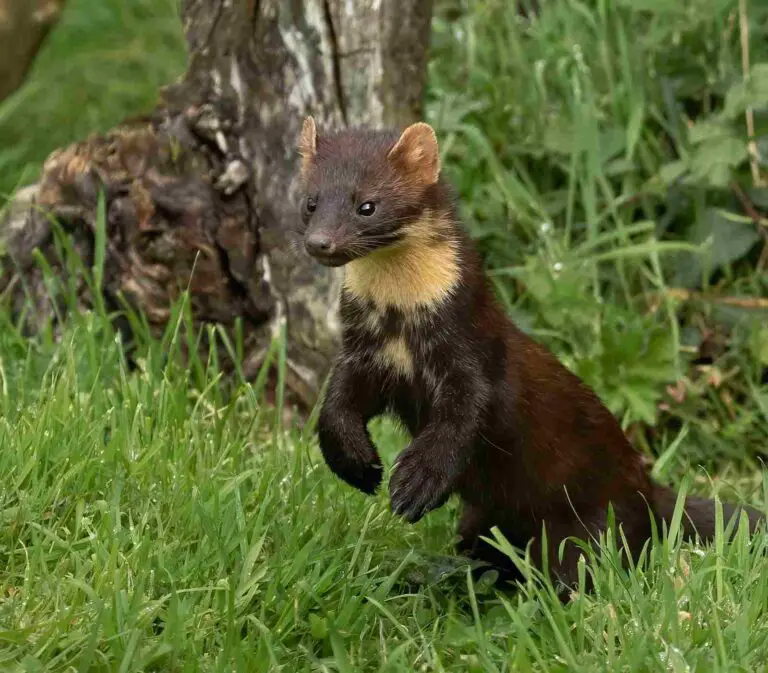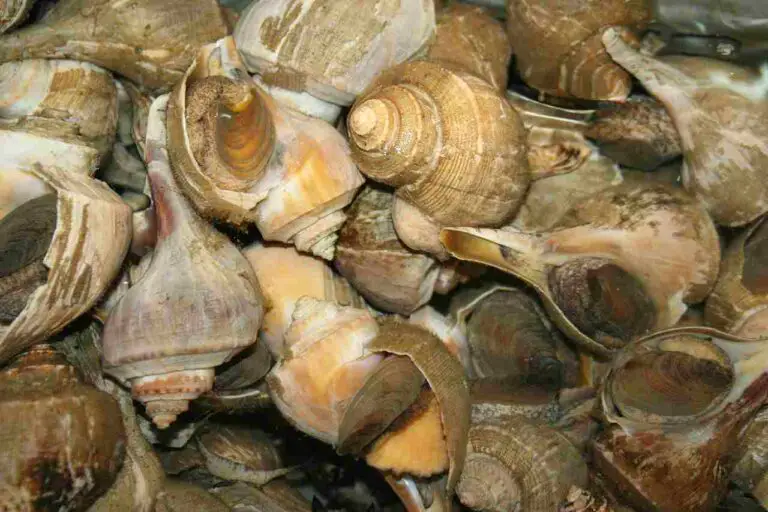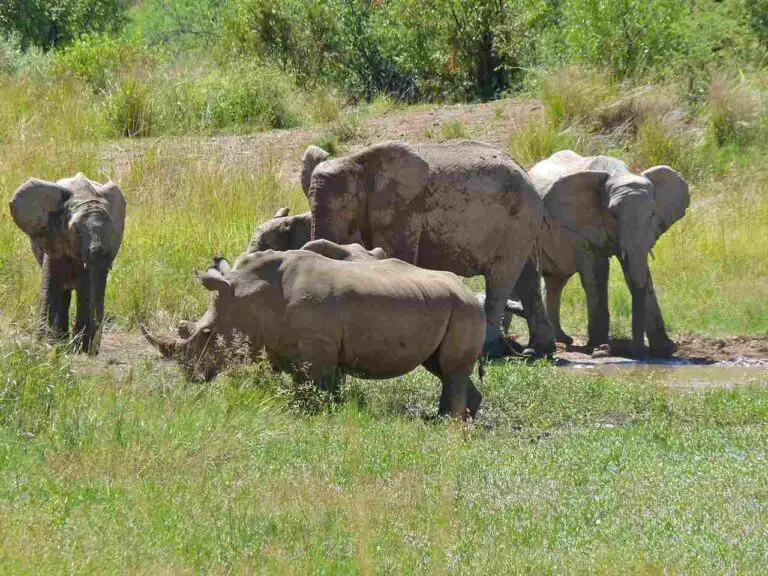Stray Cat Vs Feral Cat Size, Weight, Overall Comparison
Stray cats are outdoor cats with a small degree of human socialization, while feral cats are outdoor cats with no notable human socialization at all.
Distinguishing between stray and feral cats involves unraveling the nuances within the realm of outdoor feline companions. Despite their shared outdoor lifestyle, the experiences with human interaction significantly shape their behaviors. Delving into the characteristics of stray and feral cats sheds light on the challenges and unique aspects of these independent, free-roaming feline counterparts.
I. Human Interaction:
– A stray cat, as an outdoor feline, has experienced positive human interaction at some point in its life, contributing to a more social disposition. In contrast, a feral cat, lacking recent or impactful human interaction, adopts a wild instinct, making it unsociable and challenging to tame.
II. Behavioral Cues:
– Observing behaviors and body language becomes crucial in distinguishing between stray and feral cats. Stray cats, having had positive human interactions, tend to be more approachable and open, displaying socialization potential. Feral cats, on the other hand, often exhibit guarded behaviors, creeping and crouching more frequently.
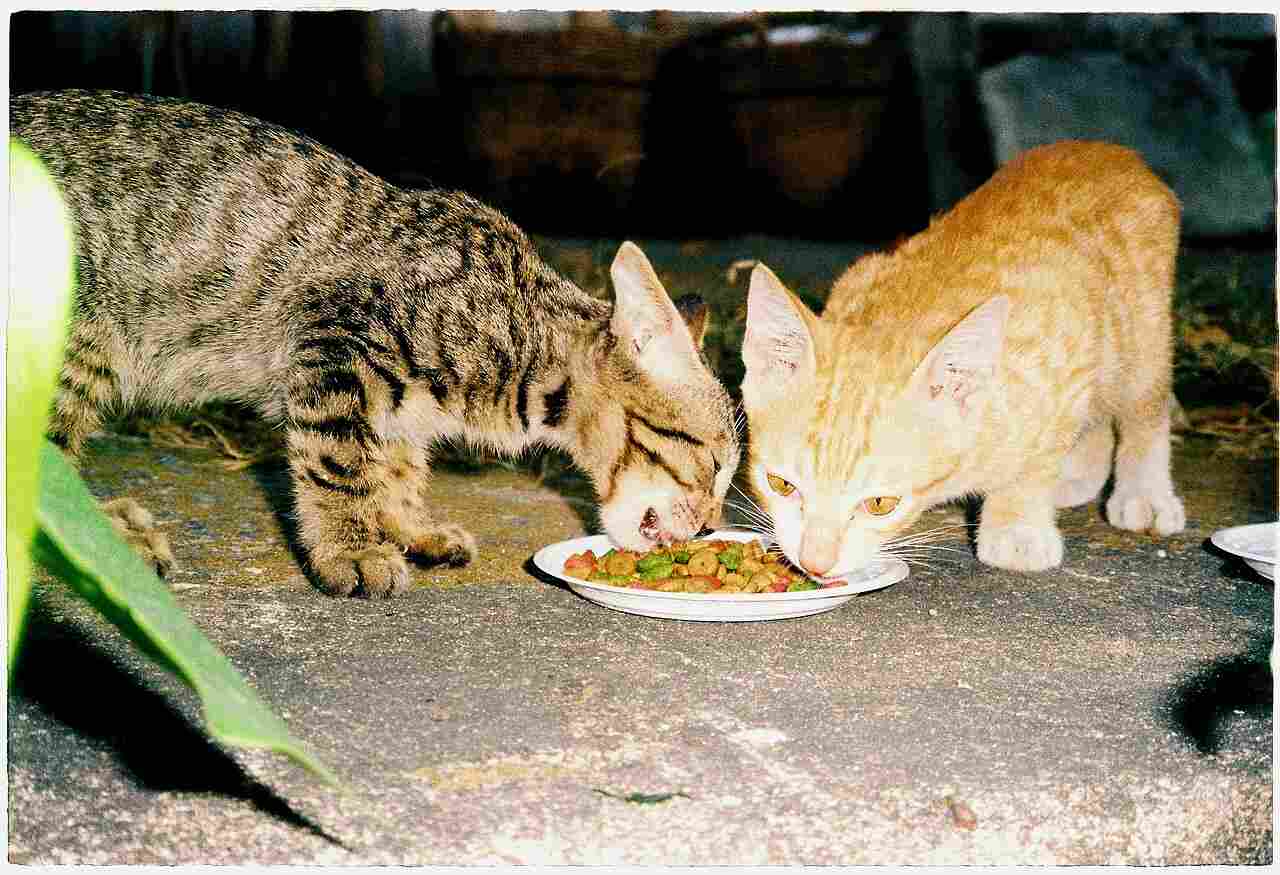
III. Taming Possibilities:
– The ability to socialize and potentially adopt stray cats into homes distinguishes them from their feral counterparts, who may resist domestication due to their lack of positive human experiences.
IV. Physiological Similarities:
– Physiologically similar, both stray and feral cats share adaptations to an outdoor lifestyle, such as heightened senses and survival instincts, allowing them to navigate and thrive in their respective environments.
V. Fighting Instincts:
– In a hypothetical confrontation, the feral cat’s wild instincts may give it an advantage in a fight, as its untamed nature contributes to a more instinctive and potentially aggressive response.
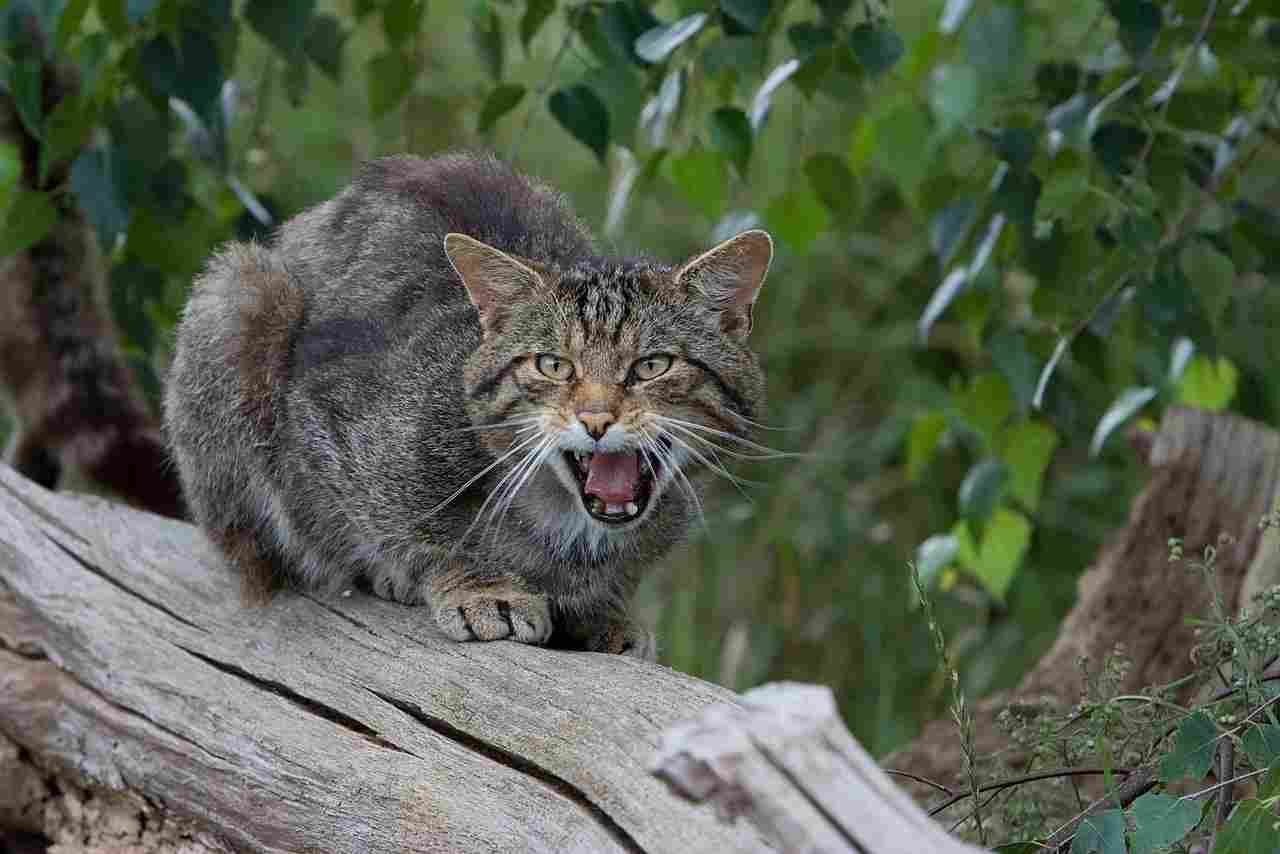
VI. Challenges in Identification:
– Identifying stray and feral cats poses challenges, as their outward appearance may not necessarily reveal their history of human interaction. Close observation of behavior becomes key in making this distinction.
VII. Nurturing Understanding:
– Understanding the differences between stray and feral cats is essential for approaching them with compassion and creating strategies to address their unique needs, whether it be through socialization efforts or supporting their independent outdoor lifestyle.
*Details of Comparison
| Criteria | Stray Cat | Feral Cat |
| Appearance | Retains domestic traits, variable coat colors. |
Rugged appearance, wildcat-like patterns.
|
| Size | Generally within domestic cat size ranges. |
More variable, influenced by the wild.
|
| Weight | Influenced by diet and human-provided resources. |
More variable, influenced by hunting.
|
| Bite Force (PSI) | Within domestic cat range. |
Potentially slightly stronger.
|
| Physical Offensive Advantages | Limited to domestic traits, potential use of claws. |
Developed predatory skills.
|
| Physical Defensive Advantages | Domestic instincts for defense. |
Heightened wariness, agility.
|
| Speed | Domestic cat speed range. |
Slightly faster due to wilder attributes.
|
| Agility | Adaptable to various environments. |
Highly agile, adapted for natural landscapes.
|
| Senses | Acute senses for domestic and urban environments. |
Heightened senses for survival in the wild.
|
| Overall Physical Capacity | Adaptable with a mix of domestic and natural instincts. |
More robust combination of wild instincts.
|
| Habitat Preference(s) | Adaptable to human-influenced environments. |
Prefers natural landscapes.
|
| Tracks | Reflect variations based on domestication and environment. |
Show more pronounced wild characteristics.
|
| Lifespan | Influenced by access to resources and human interactions. |
Generally shorter due to harsher conditions.
|
| Mode of Feeding | Combination of hunting, scavenging, and human-provided food. |
Primarily depends on hunting and scavenging.
|
| Intelligence | Blend of domestic and adaptive intelligence. |
More instinct-driven intelligence.
|
| Social Behavior | Varied social behaviors influenced by human interactions. |
More solitary, emphasizing individual survival.
|
| Mode of Reproduction | Exhibits domestic and feral mating behaviors. |
Follows natural mating behaviors with territorial instincts.
|
| Parental Behavior | Mix of domestic and feral parental behaviors. |
Displays natural maternal instincts.
|
| Proximity to Human-Inhabited Areas | Comfortable in urban or suburban areas. |
Avoids close proximity, prefers natural habitats.
|
| Behavior Toward Humans | Displays a range of behaviors influenced by past domestication. |
More wary and aloof, generally avoids direct interaction.
|
| Danger Posed to Humans | Generally poses a lower risk due to domestication. |
Can pose a higher risk due to wilder instincts.
|
| Associated Precautions | Caution required, potential disease transmission. |
Additional caution due to defensive behavior and diseases.
|
| Conservation Status | Not considered in conservation assessments. |
Considered a potential threat to local wildlife.
|
| Conclusion (Similarities and Differences) | Both share fundamental traits but differ in domestic and wild characteristics. |
Stray cats more adaptable to human-influenced environments, feral cats prefer natural landscapes. Feral cats may pose higher risks and have implications for local wildlife, leading to conservation efforts.
|
1. Taxonomy
Stray Cat:
Species: Felis catus
Subspecies: Domesticus (Domestic Cat)
Feral Cat:
Species: Felis catus
Subspecies: Catus (Wildcat)
Stray cats are domestic cats that have become lost or abandoned, while feral cats are domestic cats that have reverted to a wild state. Despite the taxonomic similarities, their subspecies classification reflects the distinct differences in their living conditions and behavior.
2. Appearance
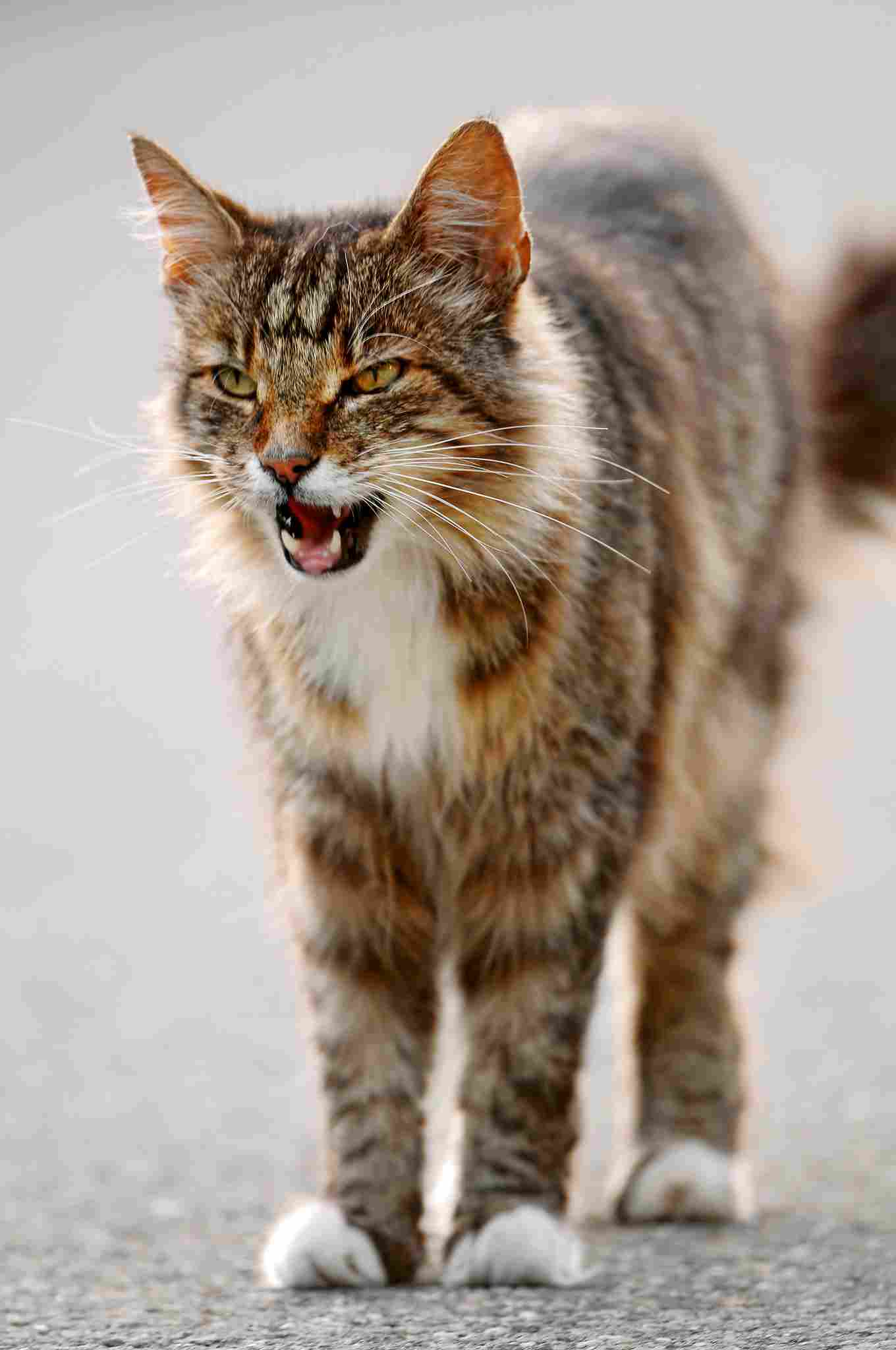
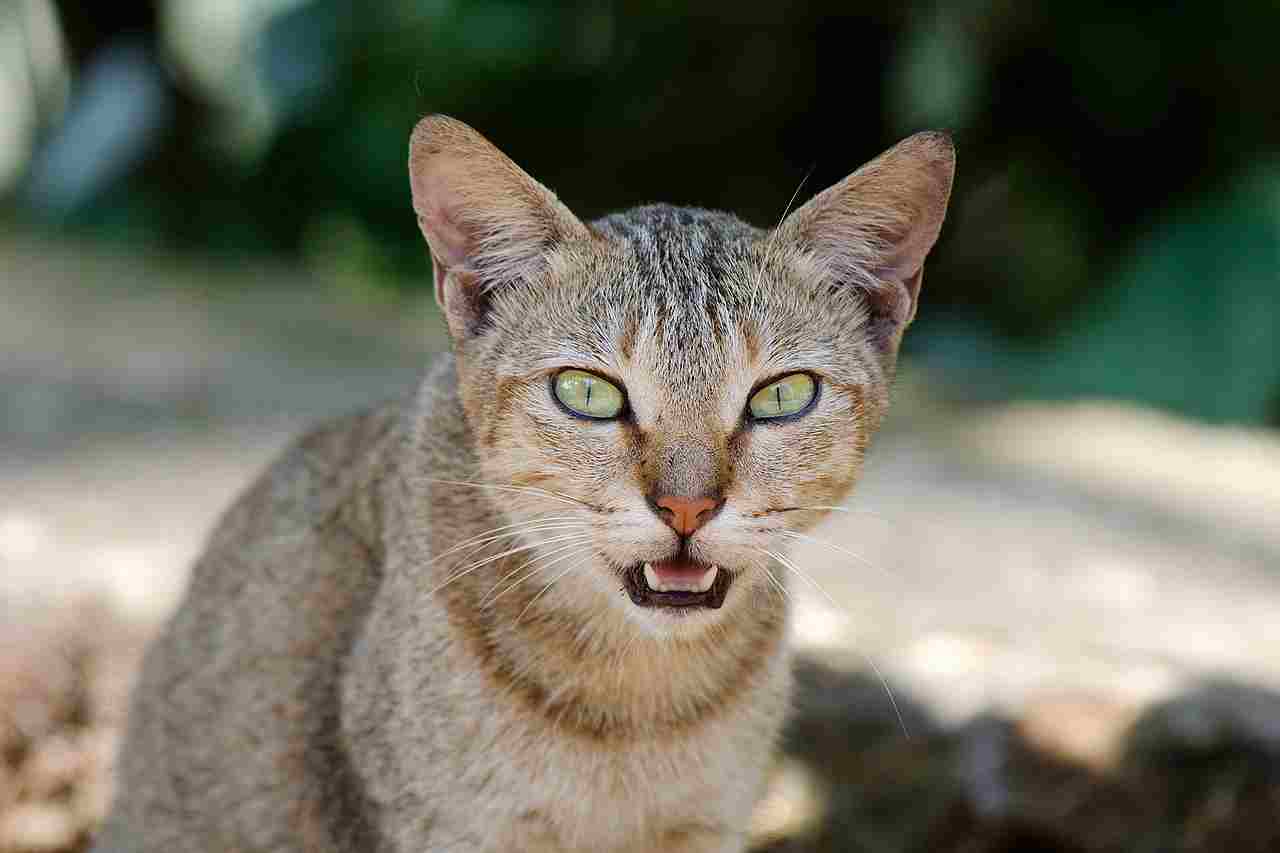
Stray Cat:
Typically retains domestic cat traits, may appear well-groomed or slightly disheveled.
Coat color and patterns vary widely due to diverse domestic breeds.
Feral Cat:
May exhibit more rugged appearance, with unkempt fur and a wilder demeanor.
Coat color often resembles that of the wild ancestors, providing better camouflage.
Comparison: Stray cats often maintain traits associated with domestication, while feral cats may show adaptations to a wilder environment.
Ecological Implications: The appearance of stray cats may reflect their recent domestic ties, potentially influencing how other animals perceive and interact with them. Feral cats’ camouflaged appearance aids in hunting and survival in natural environments.
3. Size
Stray Cat:
Size can vary based on breed, but generally falls within domestic cat size ranges.
Feral Cat:
May display a slightly leaner physique and more variation in size, influenced by adaptation to available resources.
Comparison: Both stray and feral cats share similar size characteristics, but feral cats might exhibit more variability due to environmental influences.
Ecological Implications: Size variations among feral cats may contribute to their adaptability in diverse habitats, allowing them to exploit different ecological niches for survival.
4. Weight
Stray Cat:
Weight influenced by factors like diet and access to consistent food sources.
Generally, weights align with domestic cat averages.
Feral Cat:
Weight may vary more significantly, influenced by successful hunting and resource availability.
Comparison: While both can have variable weights, feral cats may show greater fluctuations based on their ability to hunt and access food in the wild.
Ecological Implications: The weight dynamics of feral cats highlight their reliance on hunting skills and adaptability to changing food availability in natural environments.
5. Bite Force (PSI)
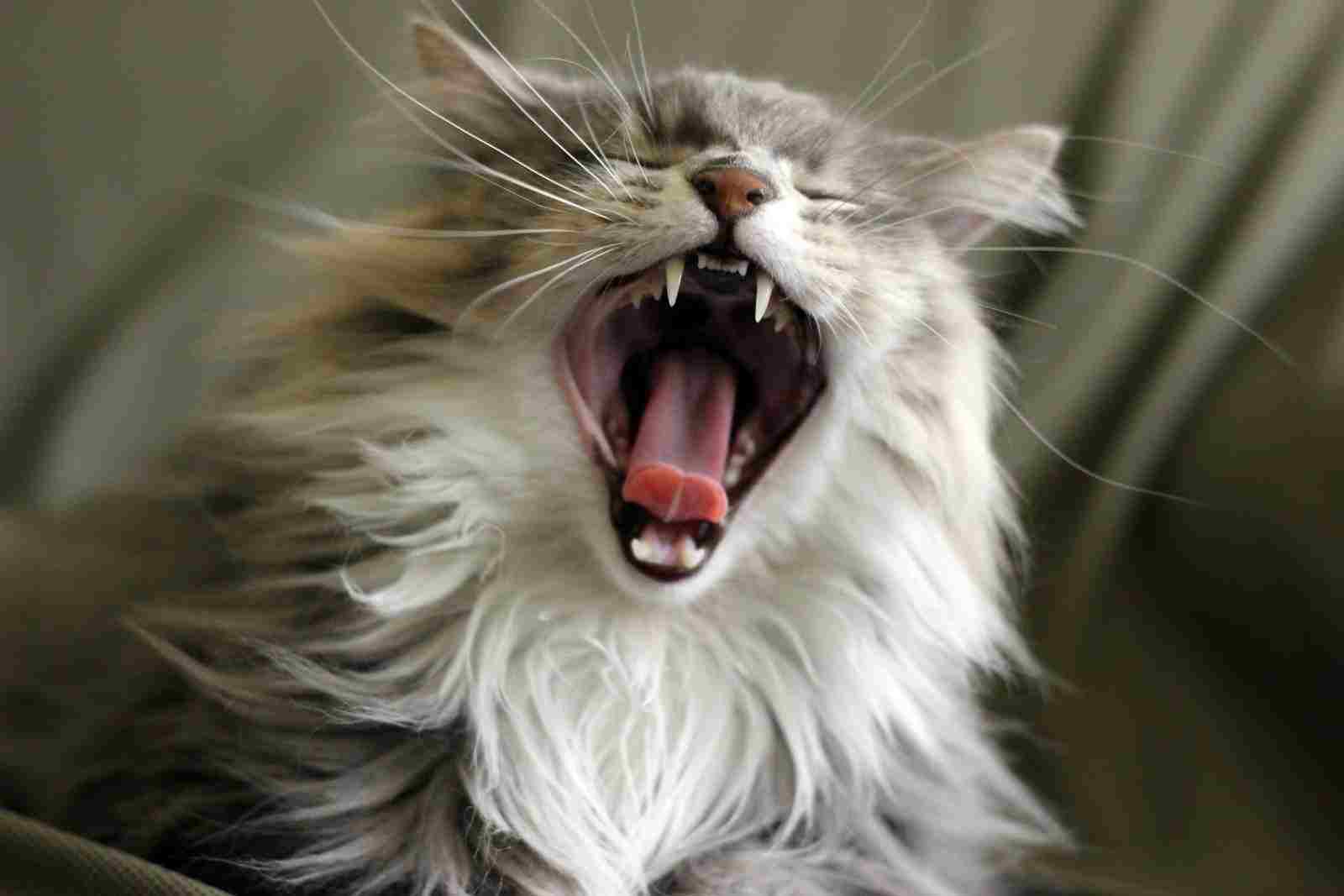
Stray Cat:
Bite force influenced by domestication traits, typically within domestic cat range (around 230 PSI).
Feral Cat:
May exhibit a slightly stronger bite force due to the potential for enhanced jaw muscles through hunting.
Comparison: Feral cats might possess a slightly stronger bite force compared to stray cats due to their wilder lifestyle.
Ecological Implications: The increased bite force in feral cats could contribute to their effectiveness as predators, aiding in capturing and consuming wild prey for sustenance.
6. Physical Offensive Advantages
Stray Cat:
Limited to domestic traits; may rely on natural instincts for defense.
Potential use of claws and agility for offensive maneuvers.
Feral Cat:
Developed predatory skills contribute to more effective offensive tactics.
Enhanced hunting instincts, stealth, and aggression for survival.
Comparison: Feral cats generally exhibit superior offensive capabilities due to their heightened predatory instincts and adaptability.
Ecological Implications: The predatory advantages of feral cats can impact local wildlife, potentially disrupting ecological balance through increased predation on native species.
7. Physical Defensive Advantages
Stray Cat:
Relies on domesticated instincts for defense, such as fleeing or hiding.
May use vocalizations and body language to ward off threats.
Feral Cat:
Heightened wariness and agility contribute to effective defensive strategies.
Developed survival instincts for evading predators and other threats.
Comparison: Feral cats possess more refined defensive skills, adapting to the challenges of surviving in the wild.
Ecological Implications: Feral cats’ defensive abilities enable them to navigate natural environments more effectively, impacting their interactions with both predators and potential prey.
8. Speed (Km/hour or Mile/hour)
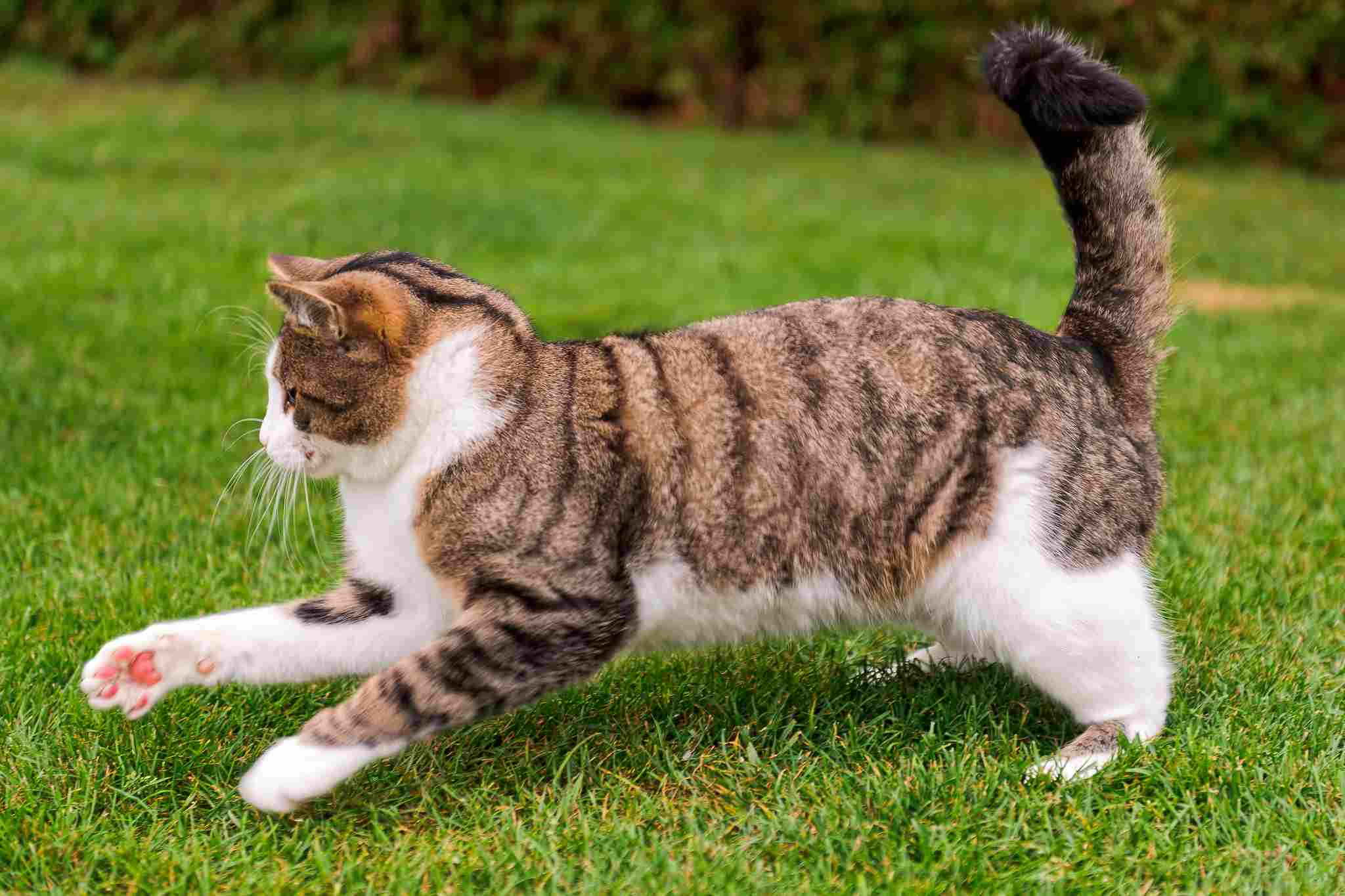
Stray Cat:
Domestic traits may limit top speed, generally within domestic cat speed range (around 30 mph or 48 km/h).
Feral Cat:
Enhanced agility and wild instincts may contribute to slightly faster speeds.
Comparison: Feral cats might exhibit slightly higher speeds than stray cats due to their wilder attributes.
Ecological Implications: Increased speed in feral cats aids in efficient hunting and evading predators, contributing to their survival in natural habitats.
9. Agility
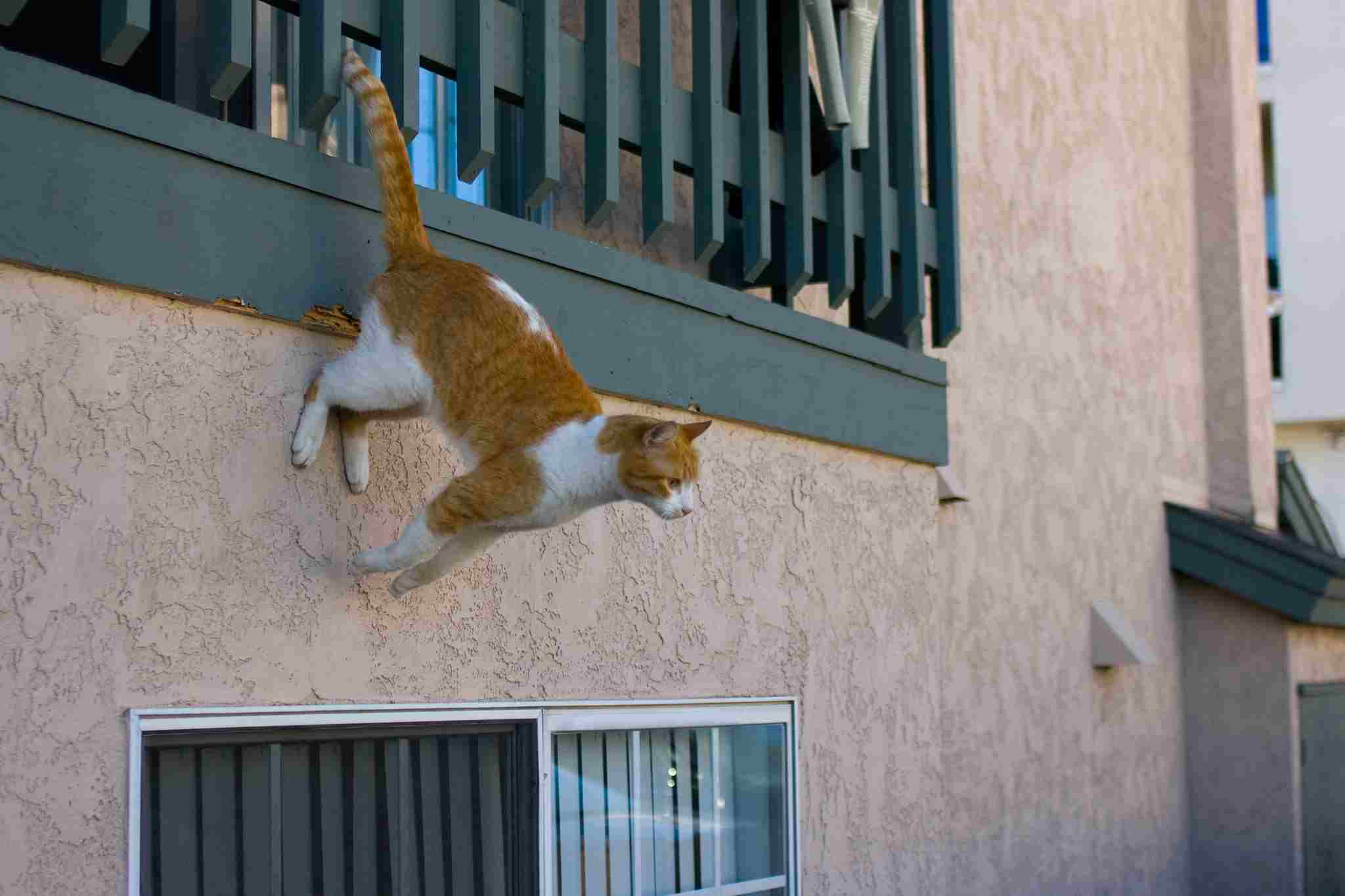
Stray Cat:
Retains domestic agility traits, capable of navigating urban and suburban environments.
May display adaptability to various surfaces and obstacles.
Feral Cat:
Highly agile, with honed skills for navigating complex natural landscapes.
Superior balance and reflexes contribute to successful hunting and survival.
Comparison: Feral cats generally demonstrate superior agility, honed through their adaptation to wild environments.
Ecological Implications: Agility in feral cats enhances their ability to navigate diverse ecosystems, contributing to their success as hunters and survivors in the wild.
10. Senses
Stray Cat:
Retains acute senses, adapted for both domestic and urban environments.
Keen sense of hearing and night vision often maintained.
Feral Cat:
Heightened senses evolved for survival in natural landscapes.
Exceptional night vision and acute hearing crucial for hunting.
Comparison: While both stray and feral cats possess acute senses, feral cats may exhibit enhanced sensory adaptations for survival in the wild.
Ecological Implications: Feral cats’ heightened senses contribute to their effectiveness as nocturnal hunters, potentially impacting local wildlife populations.
11. Overall Physical Capacity
Stray Cat:
Adaptable to urban or suburban settings, with physical capacities suited to domestication.
May display a balance of domestic traits and natural instincts.
Feral Cat:
Evolved physical capacities optimized for survival in natural habitats.
Demonstrates a more robust combination of wild instincts and physical prowess.
Comparison: Feral cats showcase a more specialized and robust overall physical capacity compared to stray cats, reflecting their adaptation to wild environments.
Ecological Implications: The superior physical capacities of feral cats contribute to their effectiveness as predators, potentially impacting local ecosystems through increased predation on native fauna.
12. Habitat Preference(s)
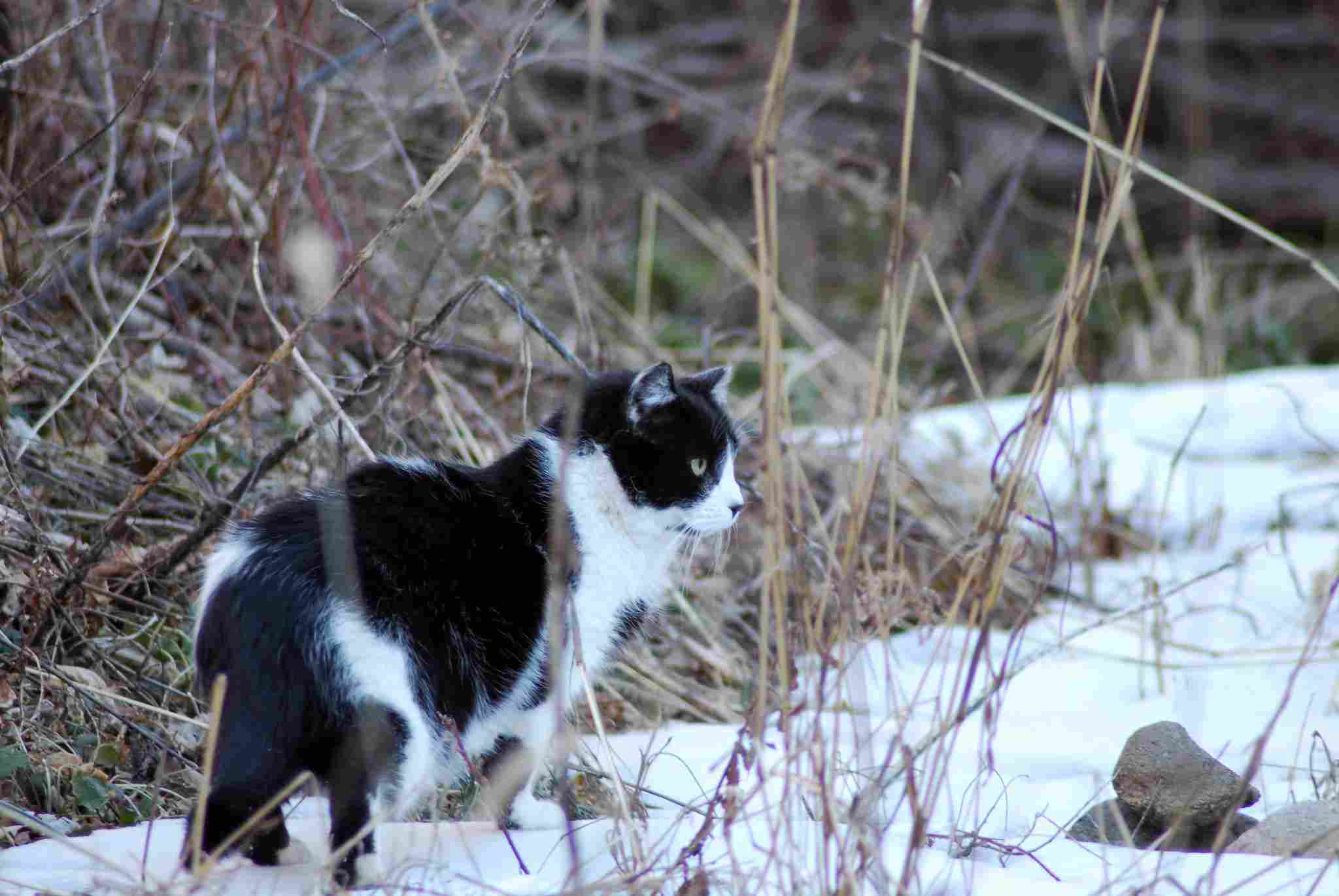
Stray Cat:
Adaptable to various human-influenced habitats, including urban, suburban, or rural areas.
May seek shelter in abandoned structures or rely on human-provided resources.
Feral Cat:
Prefers natural landscapes, such as forests, grasslands, and rural areas.
Displays greater self-sufficiency and independence from human settlements.
Comparison: Stray cats exhibit a broader habitat adaptability, including human-influenced environments, while feral cats are more inclined toward natural landscapes.
Ecological Implications: Stray cats’ ability to thrive in diverse habitats may increase their proximity to human activities, potentially impacting local wildlife and ecosystems.
13. Tracks
Stray Cat:
Tracks may exhibit a combination of domestic cat characteristics and variations based on the environment.
Claw marks may be less prominent due to the influence of human spaces.
Feral Cat:
Tracks often display more distinct wildcat features, with pronounced claw marks.
Tracks may be found in natural terrains, reflecting adaptation to varied surfaces.
Comparison: Feral cat tracks typically show more pronounced wild characteristics, while stray cat tracks may vary based on the influence of domestication.
Ecological Implications: Tracking differences can offer insights into the presence and behavior of stray and feral cats in specific environments, aiding in ecological monitoring and management.
14. Lifespan
Stray Cat:
Lifespan influenced by access to resources, veterinary care, and environmental hazards.
May experience varied lifespans depending on human interactions and living conditions.
Feral Cat:
Generally, a shorter lifespan due to harsher conditions, disease risks, and predation.
Typically, survival is dependent on natural instincts and hunting skills.
Comparison: Stray cats may have a longer lifespan compared to feral cats, as they can access some resources provided by humans.
Ecological Implications: The lifespan differences reflect the challenges feral cats face in the wild, potentially impacting local ecosystems through predation and disease transmission.
15. Mode of Feeding
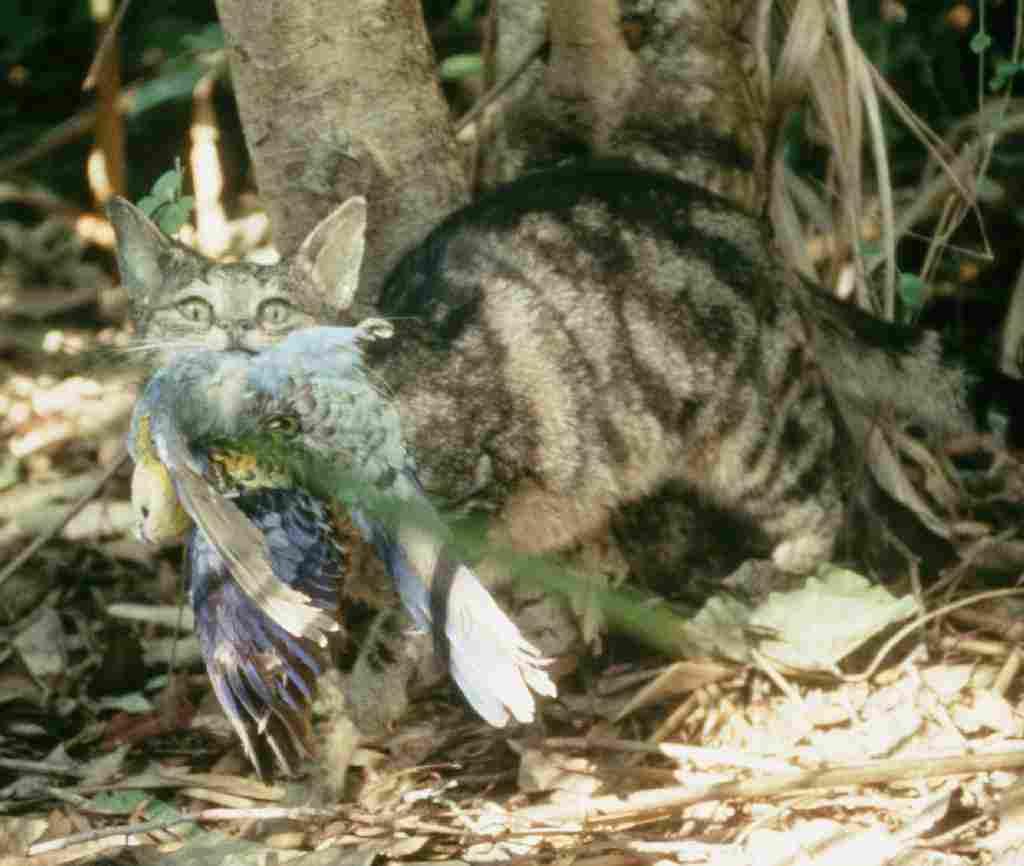
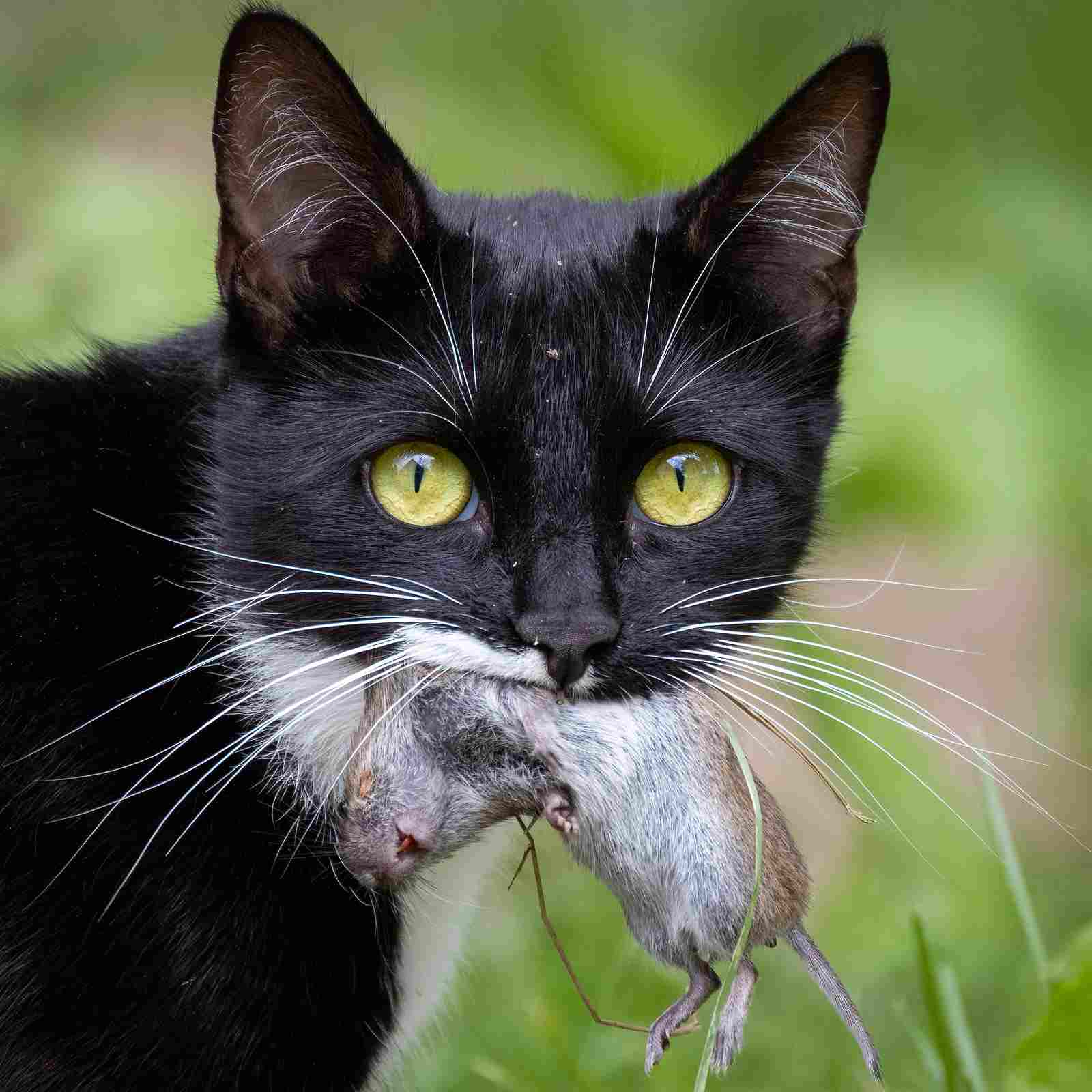
Stray Cat:
May rely on a combination of hunting, scavenging, and human-provided food.
Access to waste and food from human sources may supplement diet.
Feral Cat:
Primarily depends on hunting and scavenging for survival.
Less reliant on human-provided food, showcasing self-sufficiency.
Comparison: While both may engage in hunting and scavenging, stray cats may supplement their diet with human-provided food more than feral cats.
Ecological Implications: Feral cats’ reliance on natural prey contributes to their ecological role as predators, potentially impacting local wildlife populations.
16. Intelligence
Stray Cat:
Retains domesticated intelligence traits, potentially more adaptable to human-influenced environments.
May display problem-solving skills influenced by interactions with humans.
Feral Cat:
Exhibits heightened instincts and intelligence adapted for survival in the wild.
Displays strong hunting and territorial behaviors.
Comparison: Feral cats may showcase a more instinct-driven intelligence, while stray cats exhibit a blend of domestic and adaptive traits.
Ecological Implications: The intelligence differences impact how stray and feral cats navigate and interact with their respective environments, influencing their ecological roles.
17. Social Behavior
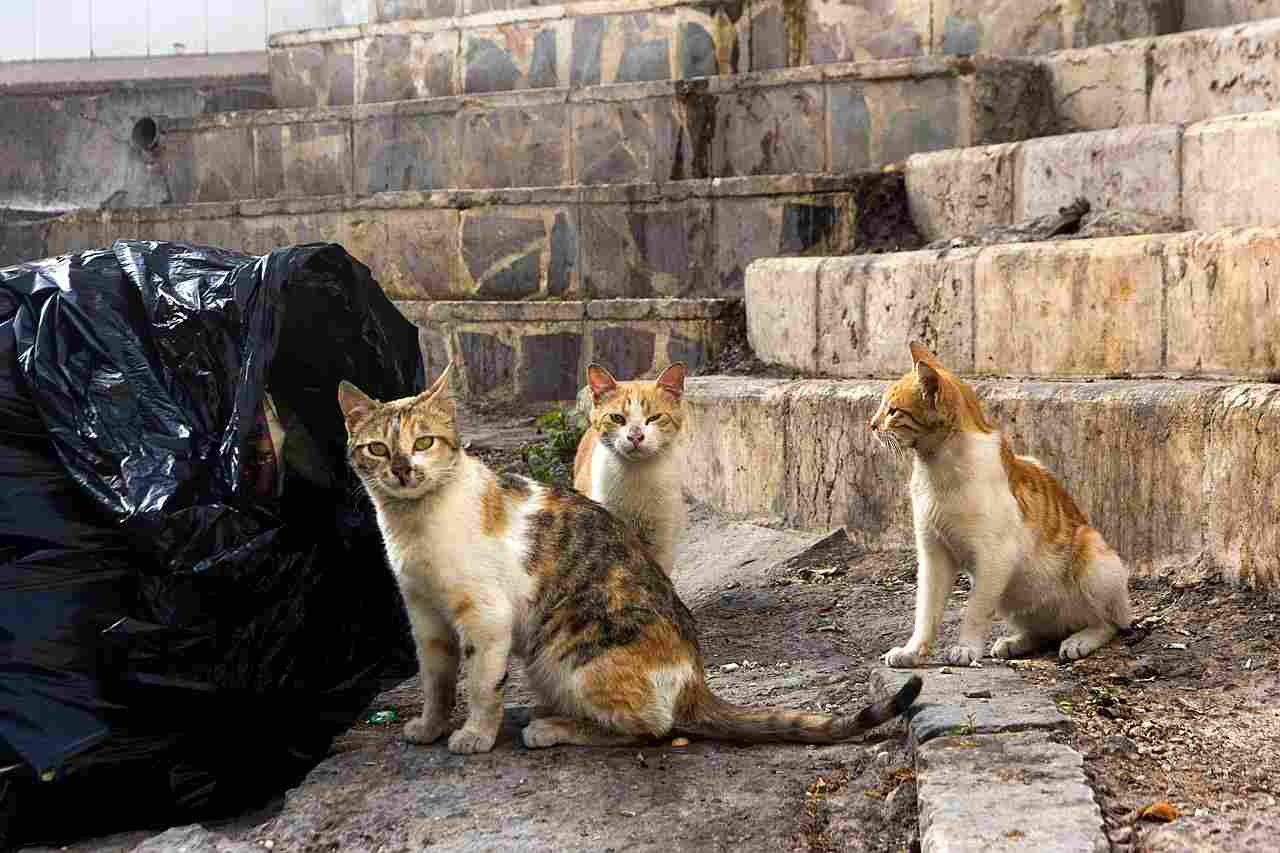
Stray Cat:
Can exhibit a range of social behaviors, influenced by previous interactions with humans.
May form loose colonies or associate with other stray or feral cats.
Feral Cat:
Displays more solitary behavior, emphasizing individual survival.
Limited social interactions, with occasional territorial disputes.
Comparison: Stray cats may demonstrate more varied social behaviors due to past interactions with humans, while feral cats are generally more solitary.
Ecological Implications: Social behaviors influence the impact of stray and feral cats on local ecosystems, affecting interactions with each other and other wildlife.
18. Mode of Reproduction
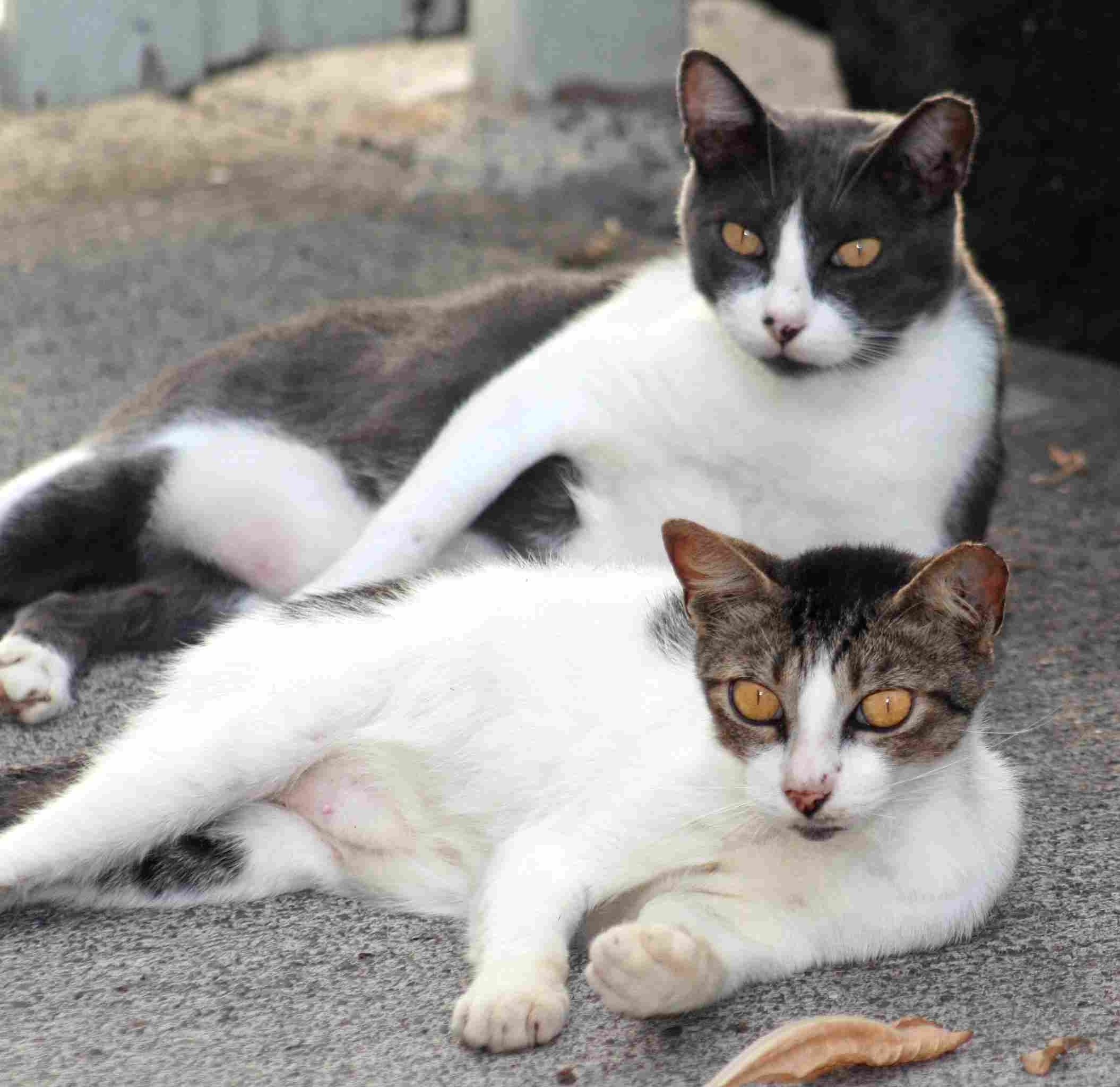
Stray Cat:
May exhibit both domestic and feral mating behaviors, influenced by previous domestication.
Reproductive patterns influenced by proximity to human settlements.
Feral Cat:
Follows natural mating and reproductive behaviors, often with more pronounced territorial instincts.
Reproductive patterns adapted to survival in the wild.
Comparison: While both may share some mating behaviors, feral cats’ reproductive patterns align more closely with wild instincts, reflecting adaptation to natural environments.
Ecological Implications: Feral cats’ mating behaviors contribute to their role as contributors to local populations, potentially impacting native species through competition for resources.
19. Parental Behavior
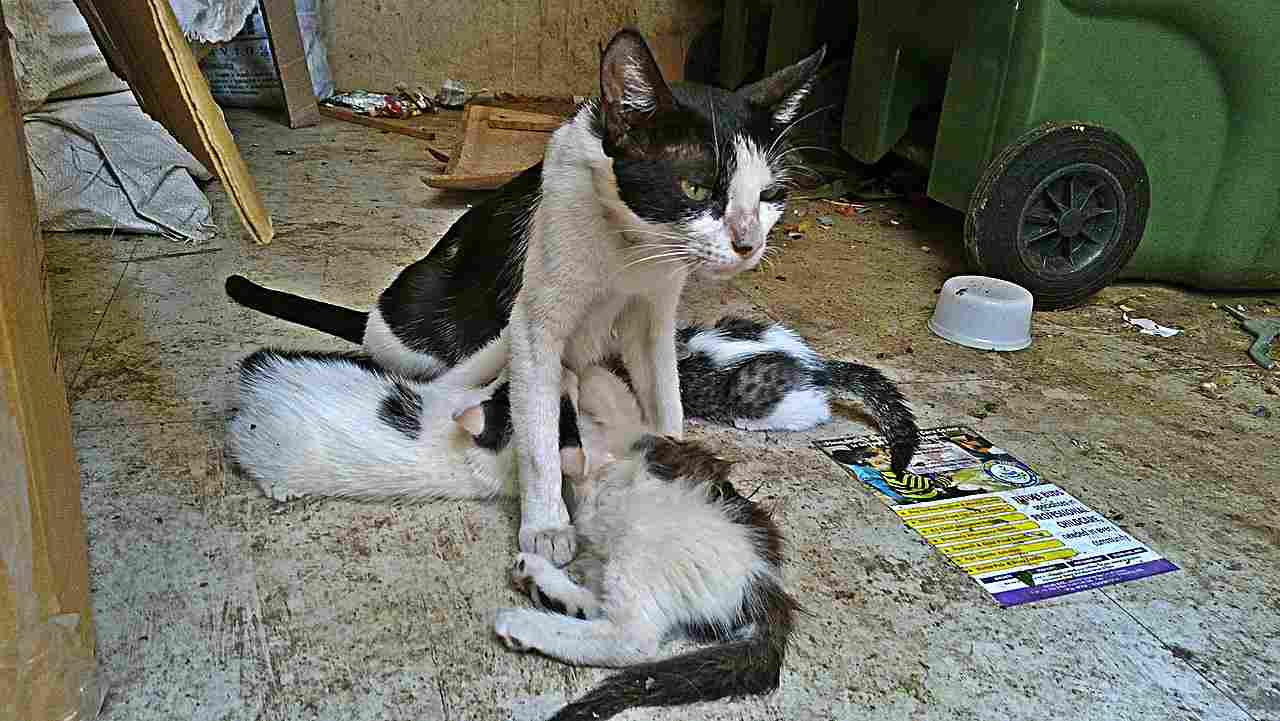
Stray Cat:
May exhibit a mix of domesticated and feral parental behaviors.
Maternal instincts may be influenced by past interactions with humans.
Feral Cat:
Displays natural maternal instincts geared toward wild survival.
Nurturing behaviors focused on ensuring offspring can adapt to the wild.
Comparison: Feral cats generally exhibit more instinct-driven parental behaviors, while stray cats may show a blend influenced by previous domestication.
Ecological Implications: Parental behaviors impact the survival and adaptation of offspring, influencing the population dynamics and potential impact on local ecosystems.
20. Proximity to Human-Inhabited Areas
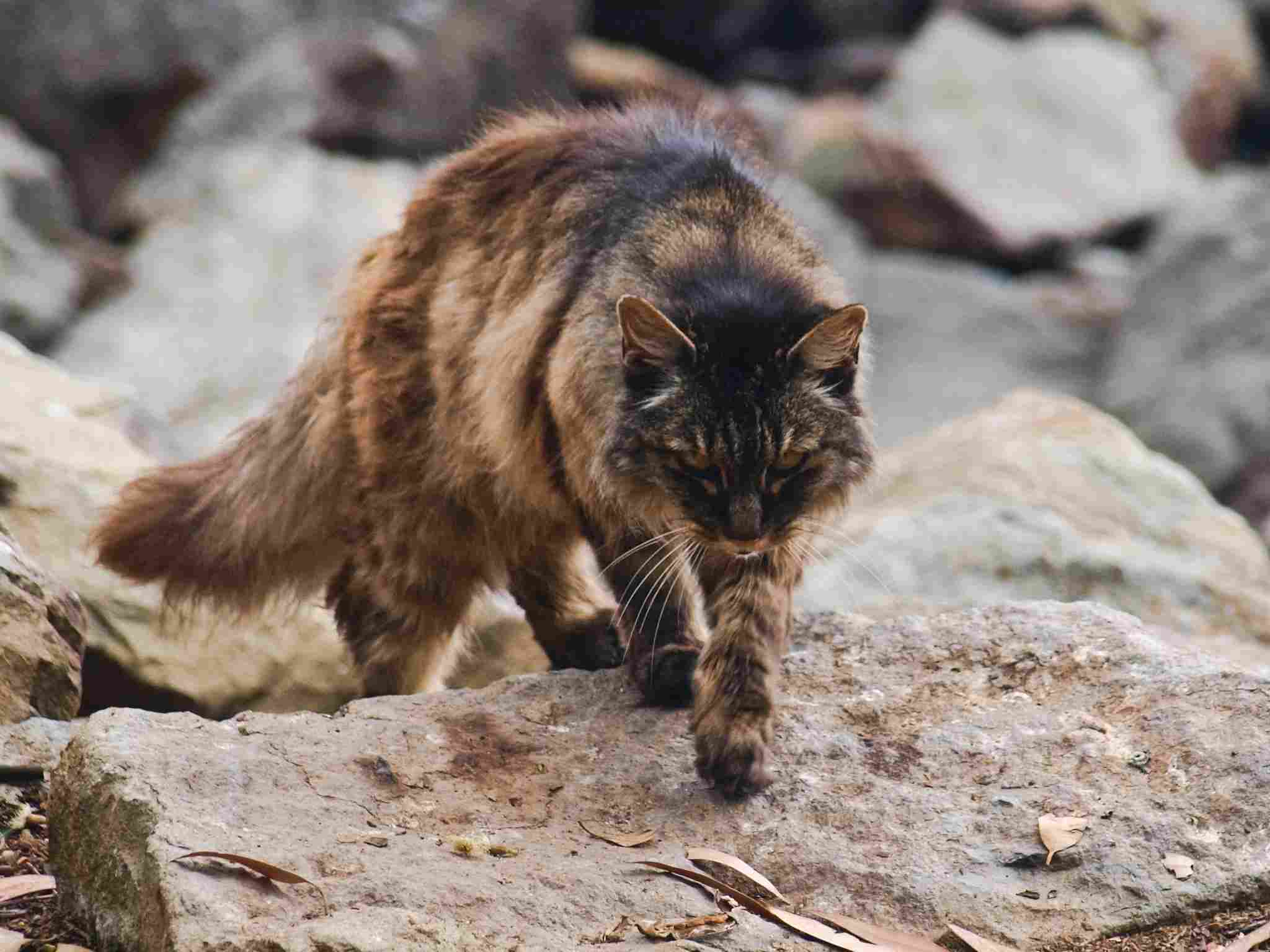
Stray Cat:
Tends to be more comfortable in urban or suburban environments due to previous domestication.
May seek food, shelter, and interaction with humans.
Feral Cat:
Avoids close proximity to human settlements, preferring natural habitats.
Limited interactions with humans, often exhibiting a more elusive nature.
Comparison: Stray cats are more likely to be found in areas with human activity, while feral cats maintain a greater distance.
Ecological Implications: The proximity differences influence the potential impact of stray and feral cats on local wildlife, human-animal conflicts, and disease transmission.
21. Behavior Toward Humans
Stray Cat:
Displays a range of behaviors influenced by past interactions with humans.
May be more approachable, seeking food or attention.
Feral Cat:
Exhibits a more wary and aloof demeanor toward humans.
Generally avoids direct interaction and may display defensive behaviors.
Comparison: Stray cats are more likely to exhibit behaviors influenced by past domestication, making them potentially more approachable than feral cats.
Ecological Implications: The behavior differences impact the dynamics of human-animal interactions, influencing the coexistence of stray and feral cats in shared environments.
22. Danger Posed to Humans
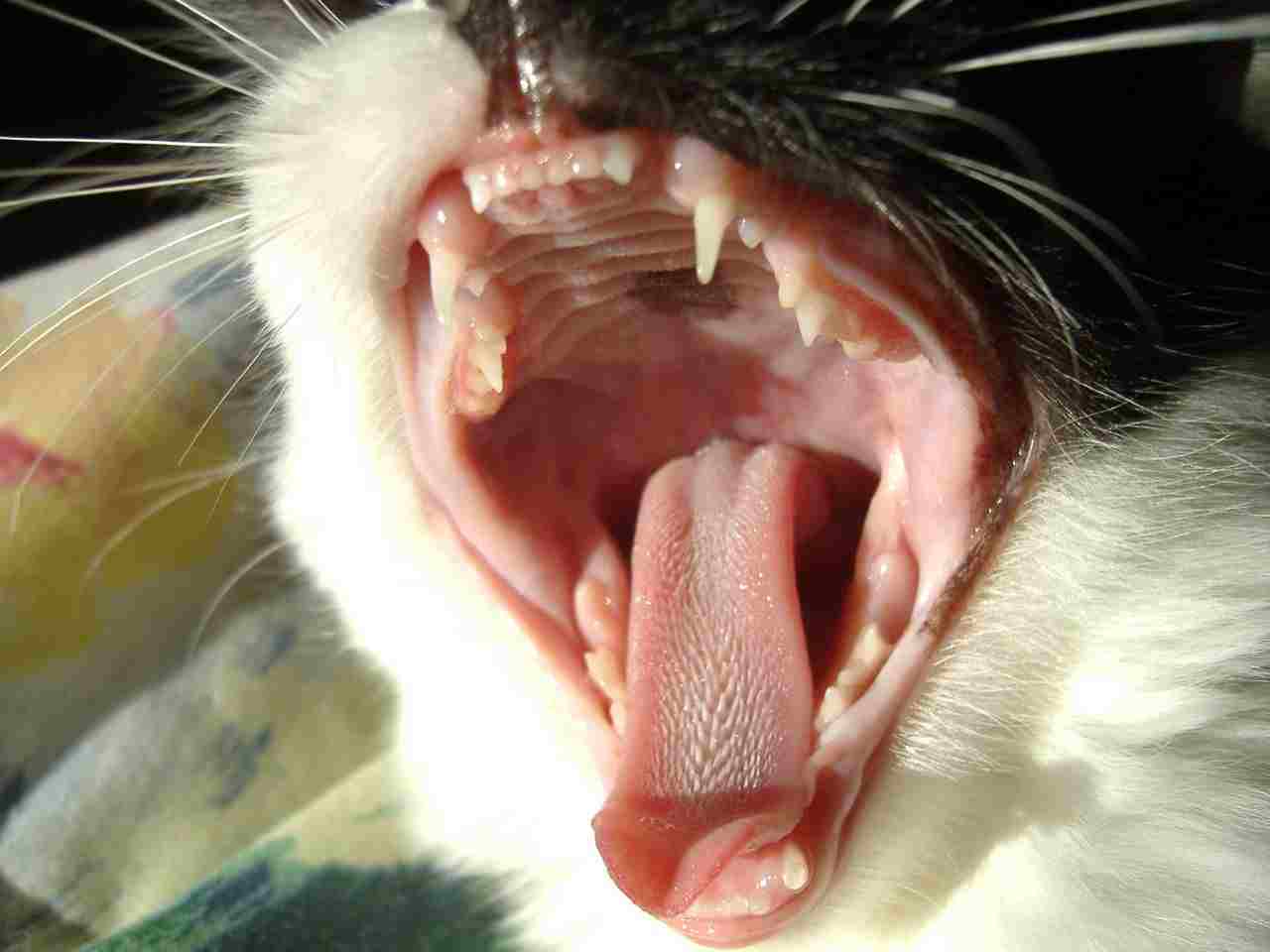
Stray Cat:
Generally poses a lower risk to humans due to previous domestication.
May display defensive behaviors if threatened but is less likely to be aggressive.
Feral Cat:
Can pose a higher risk to humans due to wilder instincts and a more defensive nature.
More likely to avoid direct confrontations but may act aggressively if cornered.
Comparison: Feral cats generally pose a higher potential danger to humans compared to stray cats, reflecting their more wild and defensive behavior.
Ecological Implications: Understanding the potential dangers helps in assessing the impact of feral cats on both human safety and local ecosystems.
23. Associated Precautions
Stray Cat:
Caution should still be exercised, especially if the cat appears distressed or unapproachable.
May carry diseases that can be transmitted to humans, requiring responsible interactions.
Feral Cat:
Approaching with caution is essential due to the potential for defensive behavior.
Higher likelihood of carrying diseases, emphasizing the need for careful handling.
Comparison: Both stray and feral cats require cautious interactions, but feral cats, with their more defensive nature, demand additional precautions.
Ecological Implications: Implementing responsible practices when dealing with these cats helps mitigate potential risks to human safety and the transmission of diseases in shared environments.
24. Conservation Status
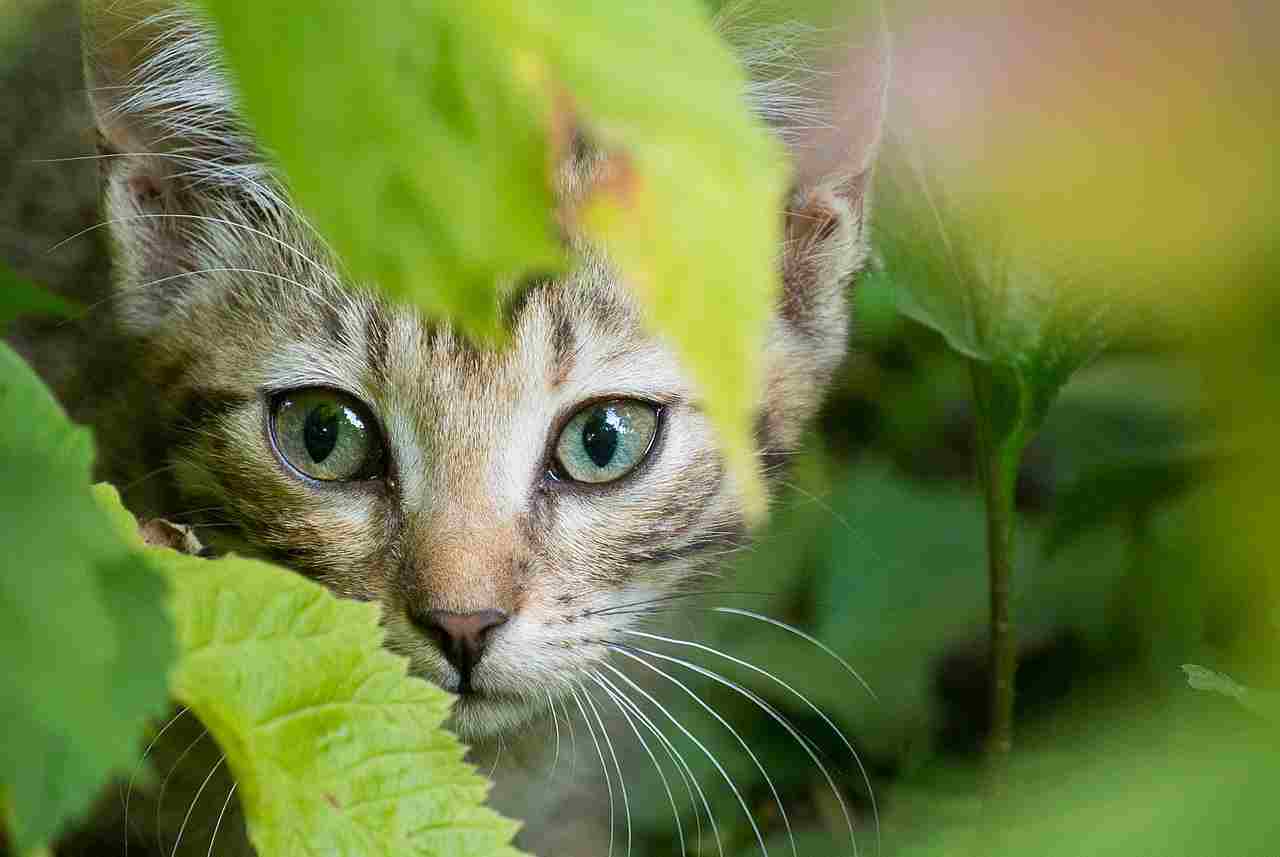
Stray Cat:
Not considered in conservation assessments as they are part of the domestic cat population.
May face population control measures in urban areas.
Feral Cat:
Considered a potential threat to local wildlife and ecosystems in some regions.
Conservation efforts may involve managing feral cat populations to protect native species.
Comparison: While stray cats are not considered in conservation assessments, feral cats can have implications for local ecosystems and may be subject to conservation management.
Ecological Implications: The conservation status highlights the potential impact of feral cats on native wildlife, necessitating measures to address their ecological role.
Summary of Comparison
Appearance:
Stray Cat: Retains domestic traits, variable coat colors.
Feral Cat: Rugged appearance, wildcat-like coat patterns.
Size:
Stray Cat: Generally within domestic cat size ranges.
Feral Cat: More variability influenced by the wild environment.
Weight:
Stray Cat: Influenced by diet and human-provided resources.
Feral Cat: More variable, influenced by successful hunting.
Bite Force (PSI):
Stray Cat: Within domestic cat range.
Feral Cat: Potentially slightly stronger due to wilder lifestyle.
Physical Offensive Advantages:
Stray Cat: Limited to domestic traits, potential use of claws.
Feral Cat: Developed predatory skills for effective offense.
Physical Defensive Advantages:
Stray Cat: Domestic instincts for defense.
Feral Cat: Heightened wariness, agility for effective defense.
Speed:
Stray Cat: Domestic cat speed range.
Feral Cat: Slightly faster due to wilder attributes.
Agility:
Stray Cat: Adaptable to various environments.
Feral Cat: Highly agile, adapted for natural landscapes.
Senses:
Stray Cat: Acute senses adapted for domestic and urban environments.
Feral Cat: Heightened senses evolved for survival in the wild.
Overall Physical Capacity:
Stray Cat: Adaptable with a mix of domestic and natural instincts.
Feral Cat: More robust combination of wild instincts and physical prowess.
Habitat Preference(s):
Stray Cat: Adaptable to human-influenced environments.
Feral Cat: Prefers natural landscapes, less reliant on human settlements.
Tracks:
Stray Cat: Reflect variations based on domestication and environment.
Feral Cat: Show more pronounced wild characteristics in natural terrains.
Lifespan:
Stray Cat: Influenced by access to resources and human interactions.
Feral Cat: Generally shorter due to harsher conditions in the wild.
Mode of Feeding:
Stray Cat: Combination of hunting, scavenging, and human-provided food.
Feral Cat: Primarily depends on hunting and scavenging.
Intelligence:
Stray Cat: Blend of domestic and adaptive intelligence.
Feral Cat: More instinct-driven intelligence adapted for the wild.
Social Behavior:
Stray Cat: Varied social behaviors influenced by human interactions.
Feral Cat: More solitary, emphasizing individual survival.
Mode of Reproduction:
Stray Cat: Exhibits domestic and feral mating behaviors.
Feral Cat: Follows natural mating behaviors with pronounced territorial instincts.
Parental Behavior:
Stray Cat: Mix of domestic and feral parental behaviors.
Feral Cat: Displays natural maternal instincts geared toward wild survival.
Proximity to Human-Inhabited Areas:
Stray Cat: Comfortable in urban or suburban areas.
Feral Cat: Avoids close proximity, prefers natural habitats.
Behavior Toward Humans:
Stray Cat: Displays a range of behaviors influenced by past domestication.
Feral Cat: More wary and aloof, generally avoids direct interaction.
Danger Posed to Humans:
Stray Cat: Generally poses a lower risk due to domestication.
Feral Cat: Can pose a higher risk due to wilder instincts.
Associated Precautions:
Stray Cat: Caution required, potential disease transmission.
Feral Cat: Additional caution due to defensive behavior and diseases.
Conservation Status:
Stray Cat: Not considered in conservation assessments.
Feral Cat: Considered a potential threat to local wildlife, subject to conservation management.
Conclusion (Similarities and Differences):
Both share fundamental biological traits but differ in domestic and wild characteristics.
Stray cats more adaptable to human-influenced environments, while feral cats prefer natural landscapes.
Feral cats may pose higher risks and have implications for local wildlife, leading to conservation efforts.
Conclusion
I. Similarities
Both stray and feral cats belong to the same species (Felis catus) and share fundamental biological traits.
They have the potential to impact local ecosystems through predation, disease transmission, and competition for resources.
II. Differences
Stray cats often exhibit traits influenced by past domestication, while feral cats showcase more wild, adaptive characteristics.
Feral cats are more self-sufficient in natural habitats, while stray cats may rely on human-provided resources in urban or suburban environments.
Human interactions and potential dangers differ, with feral cats posing a higher risk due to their defensive nature.
Conservation considerations vary, with feral cats potentially influencing local wildlife and ecosystems, prompting conservation management efforts.
